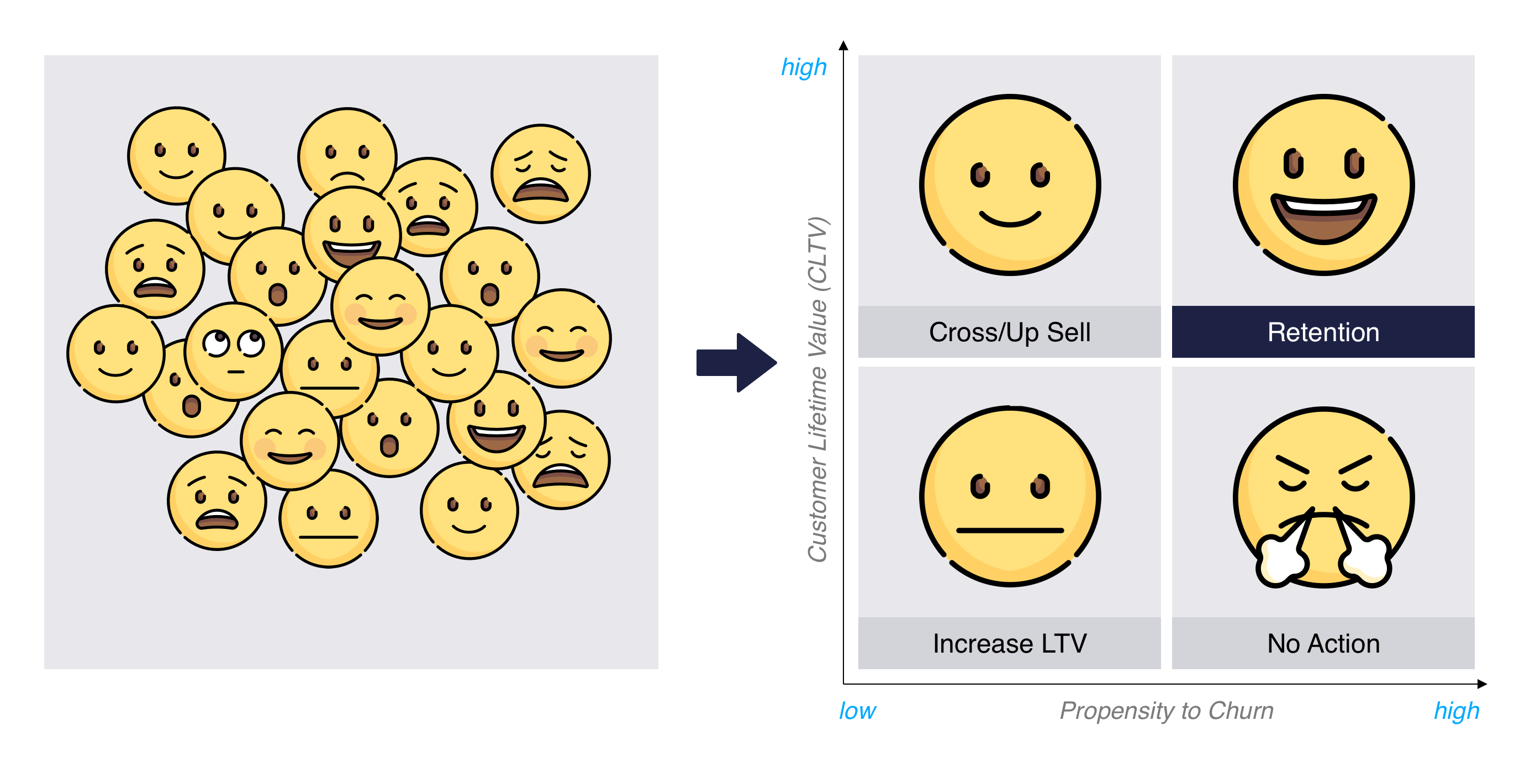Marketing with advanced analytics in times of economic uncertainty

By Christian Jabon, Vice President, Business Solutions
Advanced analytics offers service industry marketers new insights for customer segmentation and communication strategies in times of economic uncertainty
The sudden closures of many service outlets due to COVID-19 leaves many companies tasked with making critical decisions – from setting stricter operational guidelines to reducing spending to avoid major losses.
When faced with making prompt cost-saving decisions, one of the common mistakes we’ve seen major corporations do is to immediately make cuts to their marketing departments. For the most part, the consequences of doing so can have major repercussions on customer retention and overall financial recovery. Looking back at the 2008 economic crisis, we can identify some of the best and worst business scenarios in the service industry, based on a strategic approach, or lack thereof, to marketing.
As a result, they were able to outpace their main competitor’s net profit; who on the flip side, took action at a later time by cutting its labor force to keep its operational costs flat ($882 millions in net profit vs. -$37 million in net losses for Office Depot; source: company reports).
A good example case I like to reference is the post-recession impact of Staples. In the early 2000s, after assessing the office supplies market environment, Staples developed a strategy to slow down their domestic market expansion, reduce their stock keeping-unit (SKU) count, close some of their underperforming shops, expand internationally, and introduced a variety of new services for small businesses. As a result, they were able to outpace their main competitor’s (Office Depot) 2002 sales; who on the flip side, took action at a later time by cutting their labor force to keep their operational costs flat.($11.6 billion vs. $11.4 billion; source: The Motley Fool)
As a consumer and as a data analyst, I have evaluated some of the historical marketing trends caused by past economic downfalls. Here are six ways a marketing executive can help his/her company secure long-term financial growth in the time of a crisis.
1. Draft a communications strategy to stay engaged.
In times like this, expressing empathy and keeping your clientele informed about any social engagements and future offerings are critical to keep your customer engaged. By reinforcing the value of your employees and customers, you have an opportunity to boost customer loyalty and engagement. According to Gallup survey results, “Companies that provide an emotional connection with customers outperform the sales growth of their competitors by 85%.”
2. Be strategic about your marketing spend
Don’t cut your marketing cost across the board; rather, limit your marketing spending to traceable and measurable digital media outlets. Email, mobile and Web applications and websites as they are being widely used for social and work interactions, as well as news updates, shopping and entertainment. According to Yahoo Finance, “66% of social media users believe their social media usage habit will increase in the event they are confined to their home due to the Coronavirus.”
3. Leverage your business intelligence resources
Work with your business intelligence team to enrich your customer database by collecting and connecting customer data across internal and external sources to create a singular customer profiling database. Reassess your reporting needs and stay in touch with your BI developers to make sure you are capturing the most actionable insights when making decisions. Leverage your customer data and CRM technology to personalize your communication based on any new identified behaviors and market trends. Remain alert to quickly react to any profile changes and have your advance analytics team realign your customer demand forecasting constantly.
4. Stay connected with all other operational divisions
Partner with all your strategic partners across the organization to make sure that your initiatives are aligned with ongoing and future operational and managerial initiatives. Make sure to stay informed on any changes, updates, decisions that may impact your customers. Provide recommendations on promotional opportunities taking into account pricing and estimated return. Share customer behavior shifts with pricing strategists and revenue optimizers to help them identify potential areas of pricing re-adjustments and revenue opportunities.

5. Segment your customers based on their post Covid-19 economic status and sentiments
Segment your customers based on their new financial profile and communicate with them accordingly:
- Slam-on-the-breaks group are those who will be severely impacted financially and will take extreme measures to limit their spending.
- Pained-but-patient is an optimistic group who will be cautious about their spending, but will look for options to keep their activities going.
- Comfortably-well-off is identified as those who are financially secured and will keep moving with their regular activities.
- Live-for-today are those who may have been traumatized as a result of a financial or life threatening experience. They’ll rather live day-by-day rather than make any adjustments.
Also, leverage their updated sentiments and adjusted living patterns to keep the messaging sympathetic and in line with their new social behaviors:
- The Stay-at-home category will fear social interaction and will rely on the digital outlets as much as possible to conduct any transactions.
- The Proceed-with-caution group will be very selective about their activities and will react to how social gatherings are structured.
- The Live-and-let-live will go back to their normal life and will live as if nothing had ever interfered their day-to-day activities.
6. Plan your re-opening
There is no doubt that this pandemic will end at some point. For the service industry, this means that a few pricing and promotional adjustments will have to be made to address spending and psychological behavior shift. Everyone will be looking for avenues to get back to their normal social life and it will be up to the marketers to restructure promotional offerings to be in line with the trauma caused by the recent pandemic. In addition, it will be very important to communicate any measures taken to address health and safety concerns, as these have become top of mind for most people.
Given the current climate, it will be important for companies to not only have an effective marketing structure but a solid business intelligence infrastructure to support it. An integrated advanced analytics strategy can be a catalyst to enable marketing officers to drive growth and innovation. With a proper business intelligence infrastructure in place, Marketing has access to insights from reporting frameworks and advanced analytics to project business outcomes. With this foundation, an organization can create ultra-personalization for their customers, adjusting communications and promotional offerings in response to the impact of a crisis on customer behaviors and sentiments.
With analytics at their disposal, marketers will be able segment new identified patterns and personalize all communications accordingly, avoiding the traditional spray and pray approach. By ensuring that all marketing efforts are traceable and measurable companies will be able to collect enough valuable information to get actionable insights, adapt and restructure their operations as new market trends are shaping.
Consideration for segments should now include lifestyle, income brackets, health concerns, emotions and social distancing mandates. Think about the short- and long-term impact of the so-called “New Social” (which is about having everything digitized and remotely available) on your business and have a plan in line with the gradual extinction of the virus and its impact on your customers as they get back to their daily routines.
If you are looking for additional guidance on your marketing analytics program or infrastructure, please contact us.
>> Marketing for ‘New Normal’ Customer Behaviors





